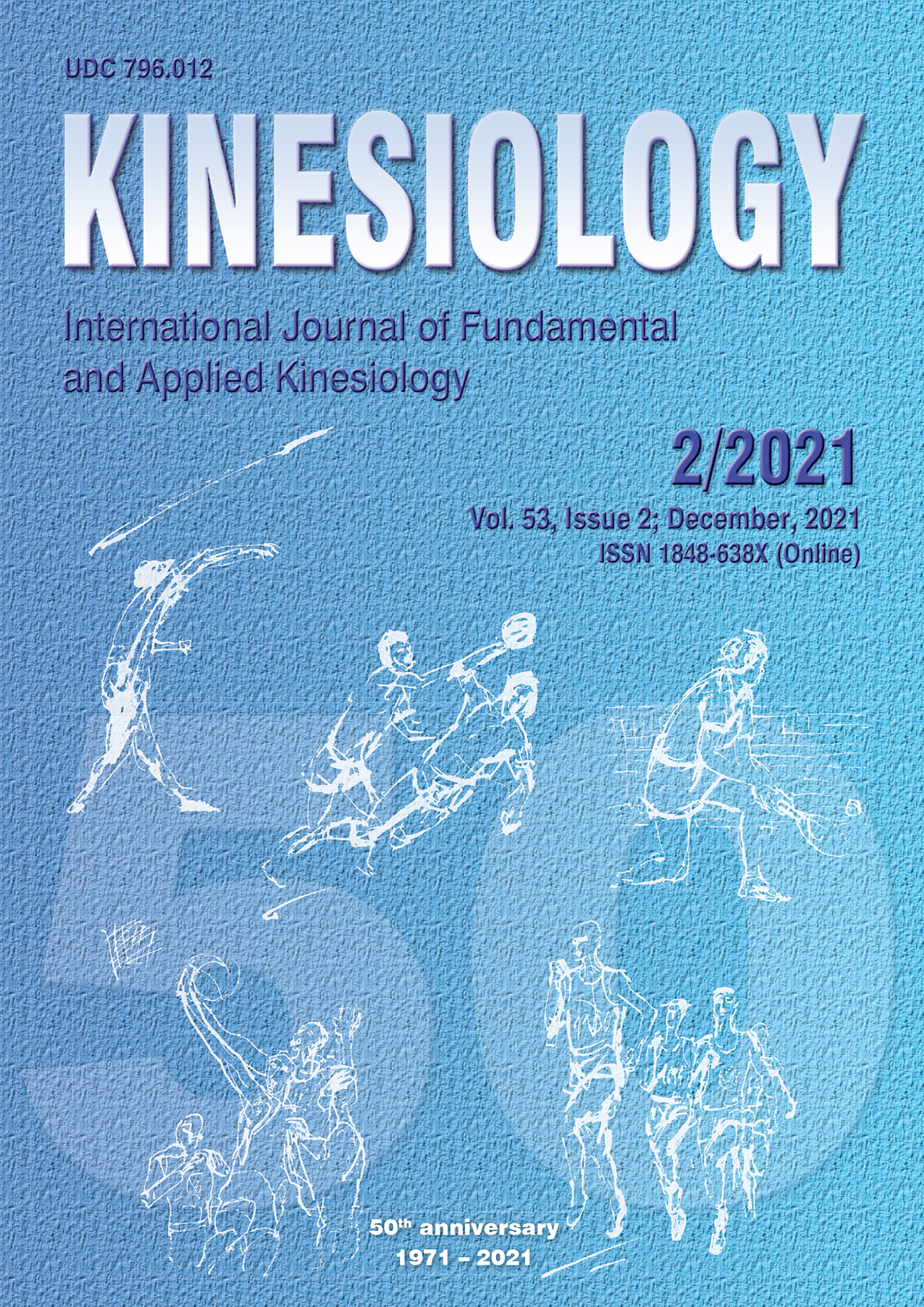UNDERSTANDING OF DROPPING OUT OF SPORTS IN ADOLESCENCE – TESTING THE HIERARCHICAL MODEL OF INTRINSIC AND EXTRINSIC MOTIVATION
Abstract
The aim of the research was to test the hierarchical model of intrinsic and extrinsic motivation (HMIEM) as a model for understanding the process of dropping out of sports in adolescence. The task oriented motivational climate created by a coach was defined as the social factor, whereas the satisfaction of need for competence and enjoyment were the psychological mediators of amotivation. Cognitive outcome was defined as the intention to drop out of sports. The sample consisted of 383 respondents, 49.9% boys and 50.1% girls from Serbia, average age 13.74 years, who actively played volleyball, basketball, and handball. Results of the structural modelling equation analysis confirmed that the HMIEM represented a good model for understanding the process of dropping out, and that it explained 18.9% of the intention to drop out of sports in adolescence. Athletes who perceive their coach’s behaviour as non-supportive, rigid, primarily focused on achievement, will have sense of incompetence and will lack enjoyment while doing sport. Unsatisfied needs then lead to the development of amotivation – the lack of reasons to do sports, and to the intention to drop out of sports. These results represent a further step towards creating educational programmes for youth sport that might prevent dropping out of sport in adolescence.
Key words: hierarchical model of intrinsic and extrinsic motivation, dropping out of sport, youth sport, motivational climate, basic needs
Downloads
Published
How to Cite
Issue
Section
License

This work is licensed under a Creative Commons Attribution-NonCommercial 4.0 International License.
At Faculty of Kinesiology we recognize that access to quality research is vital to the scientific community and beyond. Kinesiology is non-profit journal and all costs of publishing and peer review process are covered by the publisher itself or other funding sources like Ministry of Science and Education of the Republic of Croatia. Full text papers are also available free of charge at http://hrcak.srce.hr/kineziologija. There are no restrictions on self archiving of any form of paper (preprint, postprint and publisher's version).
Articles are distributed under the terms of the CC BY - NC 4.0
Kinesiology does not charge any fees to authors to submit or publish articles in our journal.


